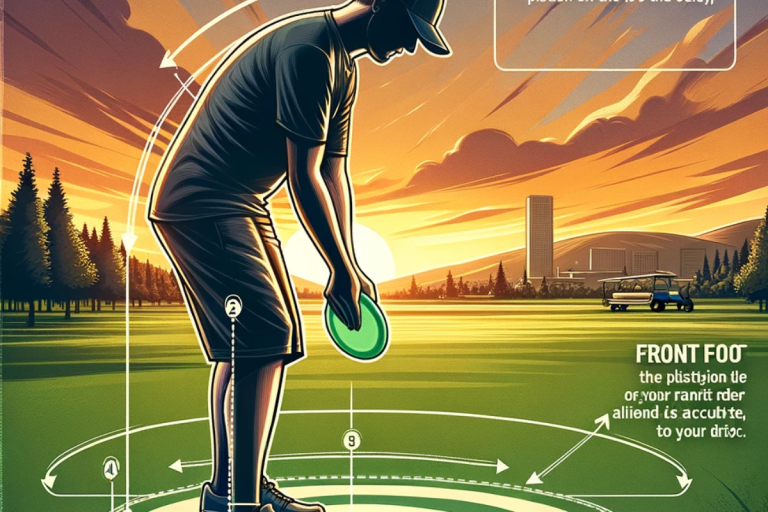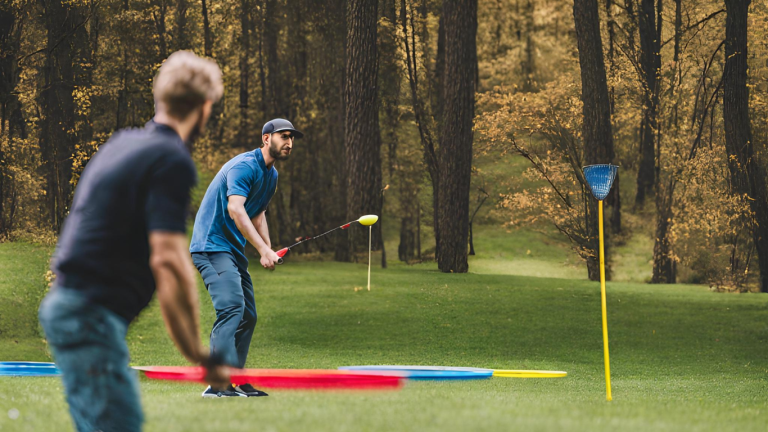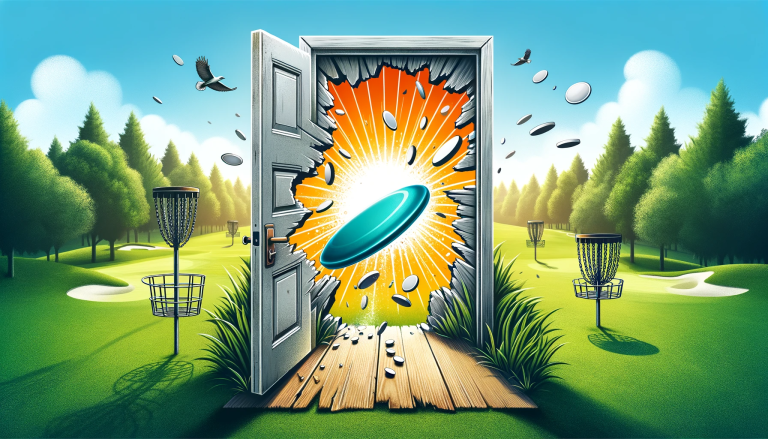What is the difference between Overstable and Understable discs? Key Differences Between Overstable vs Understable Discs for Disc Golf
Learn the meaning of overstable and understable discs in disc golf. Understand the flight patterns and best uses for overstable and understable discs. Disc golfers know that not all discs fly the same. The stability of a disc determines its flight pattern and is one of the most important factors to consider when choosing discs for different shots. Overstable and understable are terms used to describe a disc’s stability. I discovered the key differences between overstable and understable discs when I first started playing disc golf competitively. Selecting the right disc stability for your ability level and the shape of the hole is crucial for executing both simple and complex shots.
In this article, I will overview the meanings of overstable and understable, analyze their differing flight paths, and provide tips on when to use each type of stability for optimal results on the course. Whether you’re a beginner seeking more predictable disc flights or a seasoned pro mastering intricate lines, understanding disc stability is a must.
What is the difference between overstable and Understable discs?
As an avid disc golfer, one of the first things I learned was that not all discs fly the same. Their flight patterns depend heavily on the disc’s stability rating. When starting out, I had no clue what overstable and understable meant and how they impacted throws. After countless hours of practice and play, I’ve gained an intimate understanding of disc stability. The terms overstable and understable refer to how resistant a disc is to turning over in flight. In this article, I’ll share the knowledge I’ve acquired through personal experience about the characteristics of overstable and understable discs.
I’ll overview their differing flight paths and provide recommendations on when to bag each type for your best performance. Whether trying to tame a tricky dogleg or extend a drive’s distance, choosing the right disc stability is paramount. Read on for an in-depth look at overstable vs. understable discs in disc golf.
Introduction
As an experienced disc golfer, I’ve learned that a disc’s stability is one of the most important factors influencing its flight. Understanding the differences between overstable and understable discs has helped improve my game tremendously. In this section, I’ll explain the key characteristics of overstable and understable discs in detail.
What is Disc Stability?
Disc stability refers to how resistant a disc is against turning over in flight. Overstable discs resist turning over, while understable discs are easier to turn. The stability rating, often shown with a scale from -3 to +3, indicates a disc’s tendency to turn over. Discs rated +1 to +3 are overstable, while discs rated -1 to -3 are understable.
You May Also Like : When do I need more disc golf discs?
Overstable Discs Overstable discs strongly resist turning over and maintain a straight flight path, even into a headwind. Their reliable stability makes them preferred for power throws, fighting wind, and ensuring predictable flights on tight lines. Common disc golf terms used for overstable flights are “hook” and “fade”.
Understable Discs
Understable discs are prone to turning over in flight and drifting right (for RHBH throws). Understable discs extend flight distance potential on wide open holes and allow creative flight shapes like the popular “S-curve”. They offer more shot versatility for beginners and turnover specialists.
Determining Factors A disc’s stability depends on its design, plastic type, wear and tear, and throwing release/power. Overstable discs have a wider, blunt rim while understable discs have a sharper nose and narrow rim. Premium plastics are more overstable. Sidearm throws naturally induce overstability. Headwinds and tailwinds also affect turn/fade.
Why Disc Stability Matters
Control and Consistency The importance of disc stability stems from its influence on flight consistency and control. Overstable discs resist turning over and stay on their line. Understable discs require finesse but expand shot variety. Knowing a disc’s stability gives players control over the flight shapes needed for each unique hole situation.
Shot Shaping The stability of the disc determines the potential shapes of its flight path. Overstable discs allow aggressive hyzers, spike hyzers, and flex shots. Understable discs enable turnover shots, roller shots, and long distance S-curves. Their differences make both overstable and understable discs vital for tackling diverse course layouts.
When To Use Overstable vs. Understable Discs
Overstable Discs Overstable discs excel when you need reliable fades, for power throws, and when fighting headwinds. Their resistance to turning over makes them consistent performers for most players.
Understable Discs Understable discs allow turnover shots, rollers, early turn distance lines, and beginner friendly throws. They suit lighter power throwers. Their versatility opens up approaches over hazards and extended flight paths in open field holes.
Other factors affecting disc flight
While stability is critical, there are other disc characteristics and throwing variables that influence the flight path as well. In this section, I’ll overview how disc speed, glide, fade ratings, throwing form, release angle, and wind conditions also impact the flight.
Disc Speed Faster discs require more power on throws to stabilize their flight path. High speed drivers are best for experienced players with good form and arm speed. Slower discs are more beginner friendly. Speed contributes to stability – faster overstable discs resist turn better.
Glide Rating The glide rating reflects how well the disc maintains altitude during flight. Discs with more glide, especially understable ones, can achieve longer distance in the air. Greater glide reduces the fade at the end of flight.
Fade Rating The fade rating shows how strongly a disc fades left at the end of flight (for RHBH). Discs with a higher fade maintain their overstability for aggressive, late hyzer lines. More fade makes a disc more overstable overall.
Release Angle The angle of the disc upon release directly impacts the flight shape. Hyzer releases resist turn, while anhyzer angles produce more turn and distance potential. Nose-up and nose-down angles also influence glide and turnovers.
Throwing Form
Proper form including grip, run-up, weight shift, and follow through promotes consistency in release angles and power, optimizing flights. Poor form leads to off-axis torque and variability. Developing good form reduces uncontrolled turn and fade.
You May Also Like: The Best 7 Beginners Disc Golf Discs For 2024
Wind Conditions Headwinds and tailwinds exaggerate or reduce a disc’s stability tendencies depending on the wind direction. Crosswinds promote unanticipated turn and fade deviation. Learning to adapt to windy conditions improves control.
Conclusion
Through extensive playing experience, I’ve gained an intimate understanding of overstable and understable disc flight characteristics. Their differing tendencies to resist or submit to turn completely change the potential shapes of shots on the course. Learning to leverage overstable reliability and understable versatility based on hole layouts, wind conditions, and my power output has drastically elevated my disc golf game. Their differences make both overstable and understable discs essential weapons in every golfer’s arsenal.
FAQs
Q1:What causes a disc to be overstable?
Answer:
Overstable discs have a wide, blunt rim and fade hard at the end of flight due to their design.
Q2:When should I use an understable disc?
Answer:
Understable discs are great for turnover shots, rollers, and maximizing distance for lower power throwers.
Q3:How can I make an overstable disc fly straight?
Answer:
You can get an overstable disc to fly straight by throwing it on an anhyzer angle to counteract the disc’s tendency to fade.







